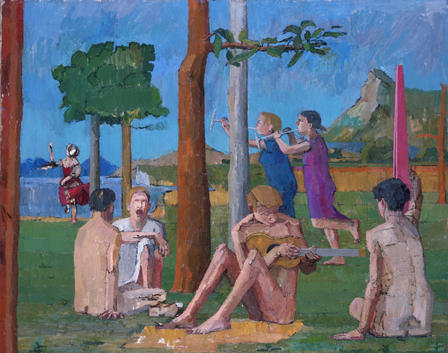 Uglow titled this Musicians, but it’s very like a picnic. Featured Image: Musicians (1953) oil on canvas. Swansea, England: National Museum of Wales
Uglow titled this Musicians, but it’s very like a picnic. Featured Image: Musicians (1953) oil on canvas. Swansea, England: National Museum of Wales
 Uglow’s Musicians (1953) is a neo-representation depiction of figures in a pastoral setting. It’s s a picnicky pastoral of men and women enjoying themselves in a pastoral setting. The central figure plays guitar while others sing and dance. There is no food or wine....
Uglow’s Musicians (1953) is a neo-representation depiction of figures in a pastoral setting. It’s s a picnicky pastoral of men and women enjoying themselves in a pastoral setting. The central figure plays guitar while others sing and dance. There is no food or wine....
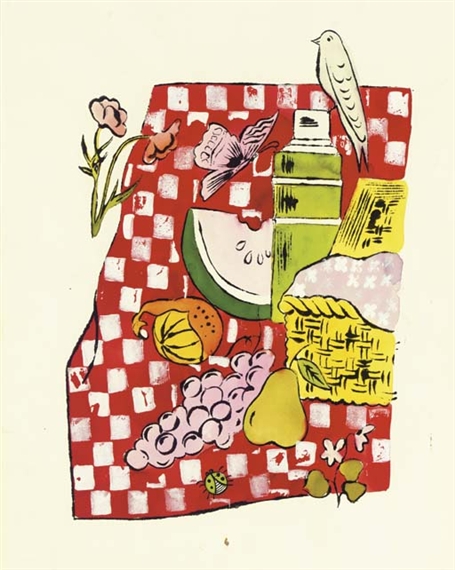 Warhol’s Picnic is an early work that lacks the pizazz of the later Pop paintings of the late 1960s. Featured Image: Andy Warhol. Picnic (1955c.), watercolor, ink, gouache on paper.
Warhol’s Picnic is an early work that lacks the pizazz of the later Pop paintings of the late 1960s. Featured Image: Andy Warhol. Picnic (1955c.), watercolor, ink, gouache on paper.
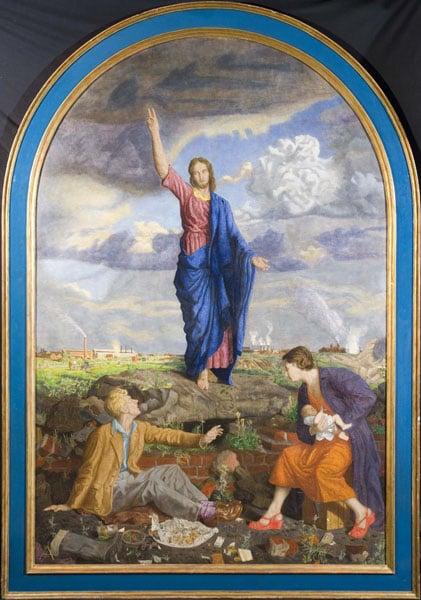 Allen’s Rubbish Dump is the closest to a spiritual picnic I know of. Christ’s stunning appearance in a wasteland suggests life without beauty when industry pollutes the environment. It is unclear if the roiling clouds are suggesting an approaching...
Allen’s Rubbish Dump is the closest to a spiritual picnic I know of. Christ’s stunning appearance in a wasteland suggests life without beauty when industry pollutes the environment. It is unclear if the roiling clouds are suggesting an approaching...
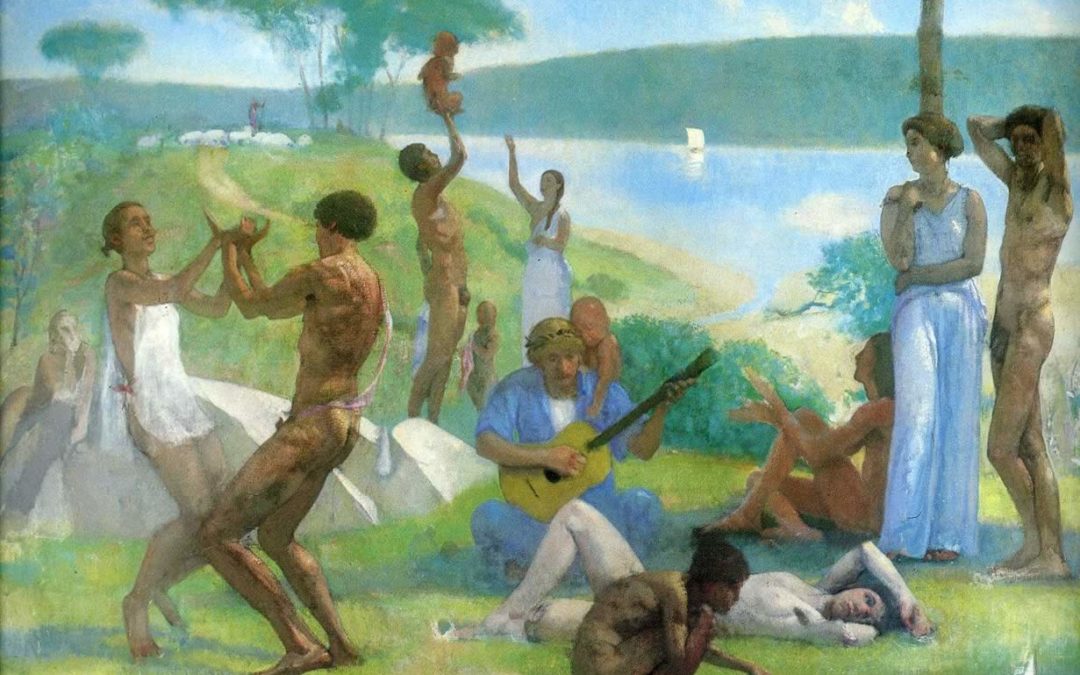 Anderson series of Idylls are picnicky, filled with people happily dancing and singing on the grass. He called the first Bacchanal and the other Idylls. In an interview, Anderson referenced Matisse’s Luxe, Calme et Volupté as a modern arcadian idyll but does not...
Anderson series of Idylls are picnicky, filled with people happily dancing and singing on the grass. He called the first Bacchanal and the other Idylls. In an interview, Anderson referenced Matisse’s Luxe, Calme et Volupté as a modern arcadian idyll but does not...
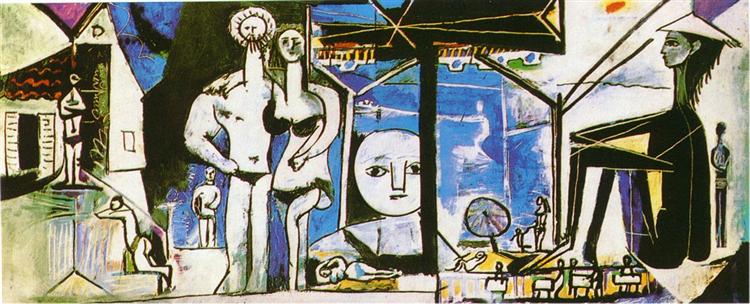 Picasso’s social contacts in Antibes and Juan-les-Pins were varied. Among his American friends were Gerald and Sara Murphy, who rented Villa America in La Garoupe. At that time, Picasso was married to Olga Khokhlova, a ballet dancer. In 1955, Picasso began a...
Picasso’s social contacts in Antibes and Juan-les-Pins were varied. Among his American friends were Gerald and Sara Murphy, who rented Villa America in La Garoupe. At that time, Picasso was married to Olga Khokhlova, a ballet dancer. In 1955, Picasso began a...
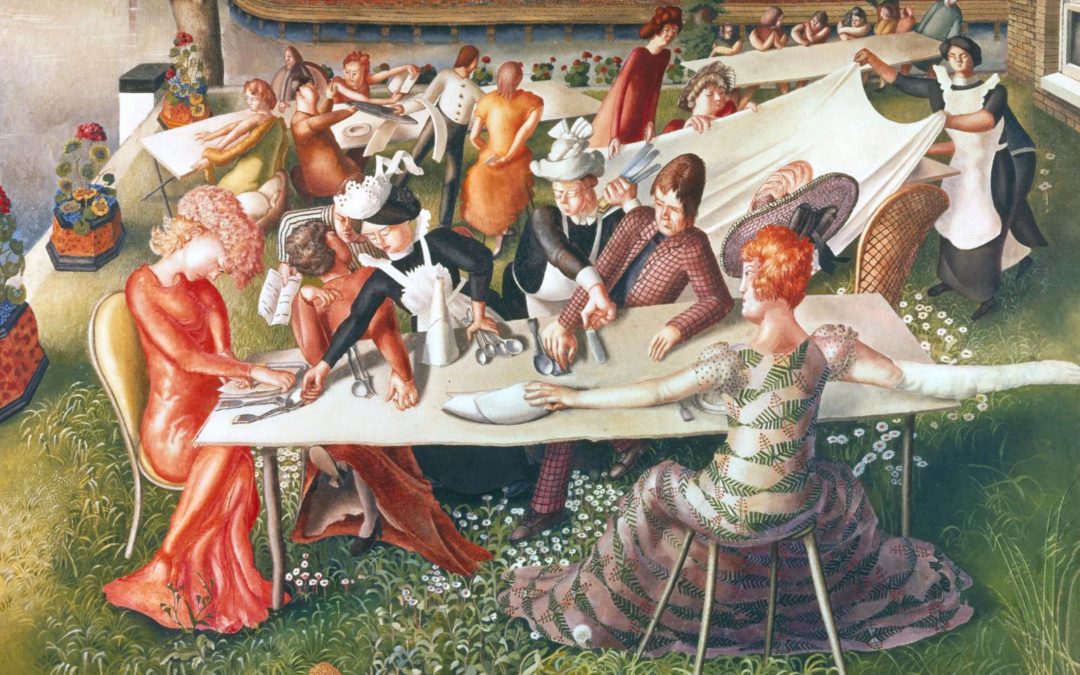 No food. Diners sit at long tables waiting. Spencer said he forgot it, but this seems disingenuous and intentionally humorous because it defies the expectation that a picnic will include abundant food and drink. See Stanley Spencer. Dinner on the Hotel Lawn (1956-57)....
No food. Diners sit at long tables waiting. Spencer said he forgot it, but this seems disingenuous and intentionally humorous because it defies the expectation that a picnic will include abundant food and drink. See Stanley Spencer. Dinner on the Hotel Lawn (1956-57)....
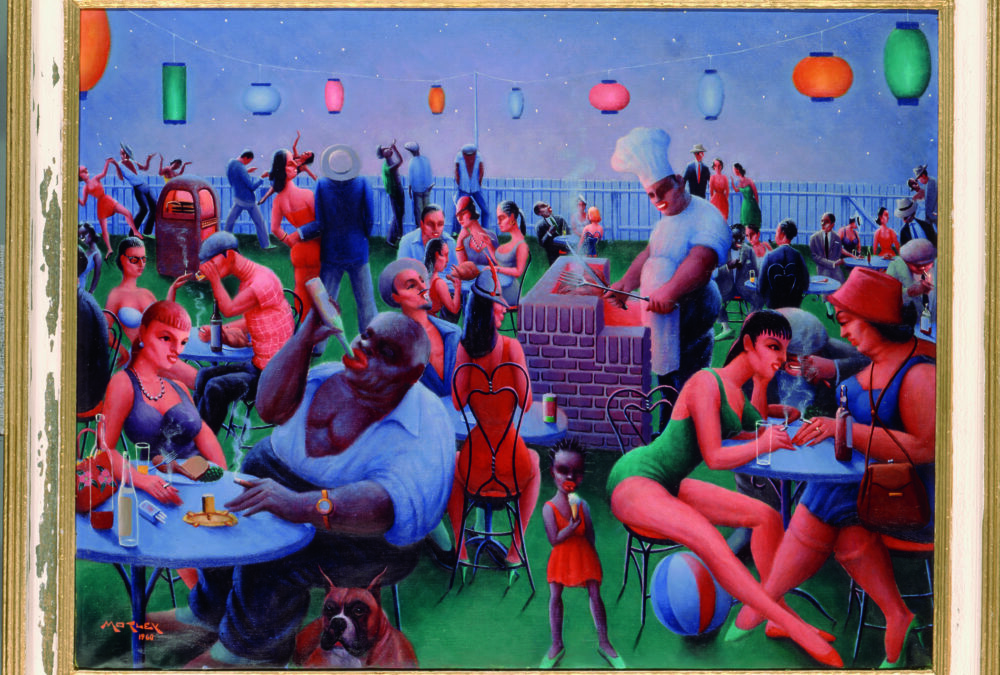 Motley’s A rooftop party is a variation of a tar beach picnic. Couples are sitting at tables eating and drinking. Good spirits prevail. Motley’s typical attitude and his paintings invariable show African Americans happy in a world of easy living....
Motley’s A rooftop party is a variation of a tar beach picnic. Couples are sitting at tables eating and drinking. Good spirits prevail. Motley’s typical attitude and his paintings invariable show African Americans happy in a world of easy living....
 Linen’s picnic contrasts the pleasure of the moment with the ruin of the past. The dead freighter has been plunked on a grassy meadow. A surrealistic vision of a topsy-turvy world some call magic realism.
Linen’s picnic contrasts the pleasure of the moment with the ruin of the past. The dead freighter has been plunked on a grassy meadow. A surrealistic vision of a topsy-turvy world some call magic realism.
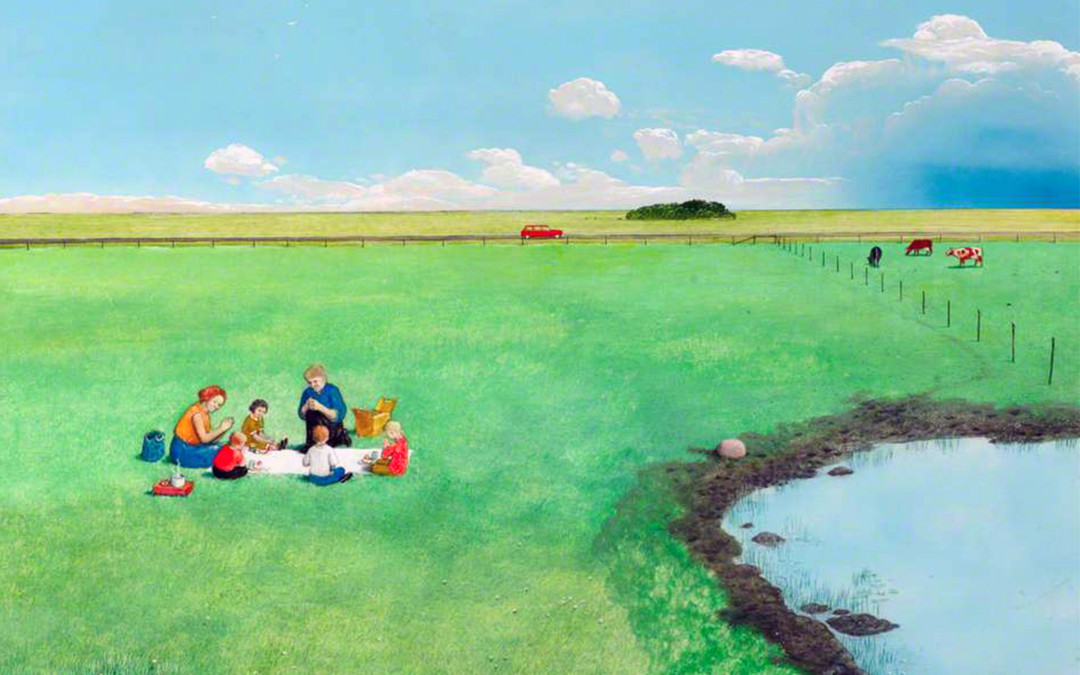 William Kurelek said he carried “wretchedness like a heavy stone sewn up inside of me.” At times, the stone was lifted as in two picnic paintings Manitoba Party (1964) and Out of the Maze (1973), each testifying his recovery from schizophrenia and lost...
William Kurelek said he carried “wretchedness like a heavy stone sewn up inside of me.” At times, the stone was lifted as in two picnic paintings Manitoba Party (1964) and Out of the Maze (1973), each testifying his recovery from schizophrenia and lost...











